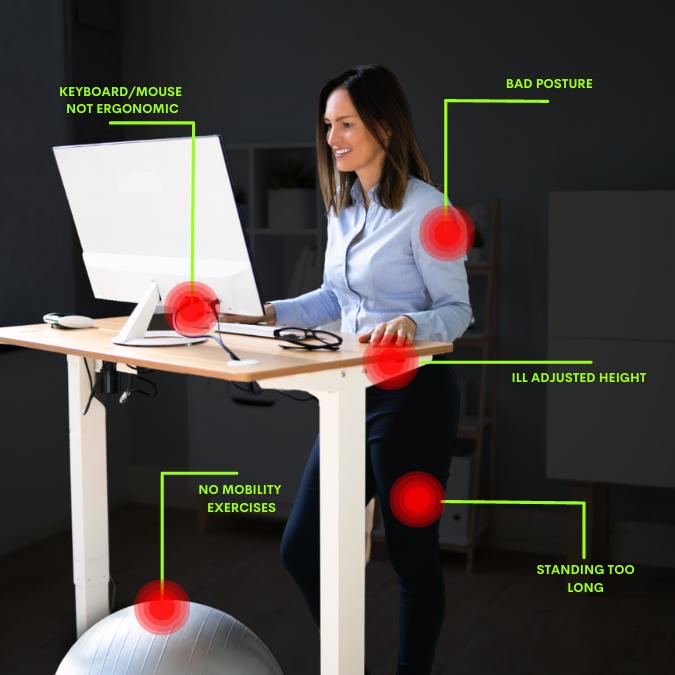The standing desk has become a popular solution to counter the harmful effects of prolonged sitting. By allowing users to work while standing, it offers many health and well-being benefits. However, using a standing desk also comes with certain pitfalls that should be avoided.
1- Ignoring the importance of alternating between sitting and standing positions
While the standing desk is designed to encourage alternating between sitting and standing positions, some users may fall into the trap of standing all day. This can lead to excessive leg and foot fatigue. It’s important to find a balance by regularly alternating between sitting and standing positions, listening to your body’s signals, and resting when necessary. It’s important to gradually acclimate to longer periods of standing, starting with 1-2 hours per day and slowly increasing, based on tolerance and comfort.
2- Failing to adjust the height correctly
Another common pitfall is not properly adjusting the height of the standing desk. Incorrect height can result in posture problems and fatigue. When setting up your standing desk, make sure your arms are at a comfortable angle for typing on the keyboard (ideally, arms should be alongside the torso with elbows bent at a 90° angle), your shoulders are relaxed, and your eyes are aligned with the top of your screen. Good posture is essential for getting the most out of your standing desk.
3- Neglecting posture
Even while standing, it’s important to maintain good posture. Paying attention to the position of your back, shoulders, and head is essential to avoid pain and tension related to poor posture. Adding a routine of mobility exercises and strength training can help maintain proper posture throughout the day, both while sitting and standing.
4- Failing to incorporate a mobility and stretching routine
One of the main advantages of a standing desk is the ability to vary your position throughout the day. However, some people may fall into the trap of standing still for long periods. This can lead to posture problems and muscle and joint pain. To avoid this, in addition to alternating between sitting and standing positions, it’s essential to regularly change positions, move around, walk, and stretch.
5- Neglecting the rest of your workstation
The ergonomics of your workstation go beyond just the height of the desk. It’s also important to consider the ergonomics of your keyboard and mouse. Use ergonomic devices that allow your wrists and hands to adopt a natural position while working. Avoid positions that cause excessive bending or extension of the wrists, which can lead to long-term injuries.
The same goes for your feet. Standing for long periods without proper support can result in excessive fatigue and pain in the feet, legs, and lower back. Use an ergonomic footrest to relieve pressure on your feet and promote better blood circulation.
If your pain persists or if you have any questions about your posture at work, don’t hesitate to schedule an appointment with a physiotherapist.





